Having a lawn as a desirable feature of residential properties can be traced back to ancient civilisations, particularly in Egypt and Mesopotamia, where wealthy individuals maintained green spaces around their homes. However, the concept of lawns as we know them today, with meticulously maintained grass, became fashionable during the 16th and 17th centuries in Europe.
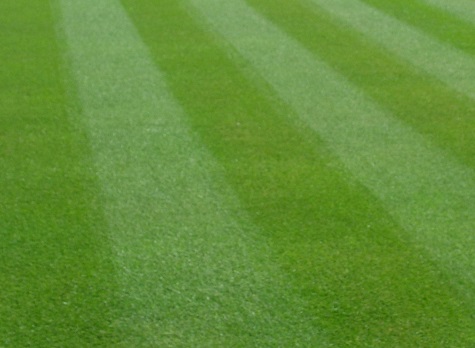
In Europe, the concept of the lawn was heavily influenced by the English landscape garden movement. The landscape designer and architect, Capability Brown, played a significant role in popularising the idea of expansive lawns as an essential element of grand estates during the 18th century. Brown's naturalistic approach to landscaping, which included sweeping lawns, meadows, and carefully placed trees, became the epitome of fashionable garden design.
The fashion for lawns continued to evolve throughout the 19th and 20th centuries. With the rise of suburban living and the development of urban parks, having a well-maintained lawn became a symbol of prosperity and social status. The invention and widespread adoption of the lawnmower in the 19th century made it easier for homeowners to cultivate and maintain their lawns.
Today, having a lawn remains a common aspiration for many homeowners, although there is growing awareness of the environmental impact of large expanses of grass and a shift towards more sustainable landscaping practices.
When I was growing up on a 1950s housing estate nearly every house had a front and rear garden area with a lawn taking up most of the space. And I remember my dad cutting the lawns with a Ransome’s cylinder pedestrian push mower.
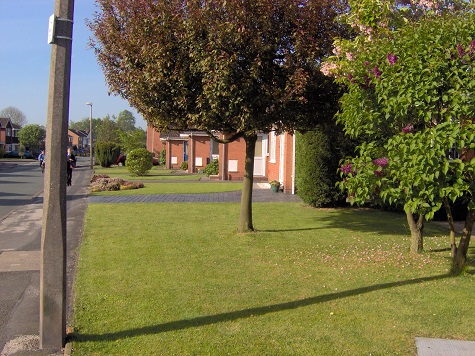
My initial professional association with maintaining a lawn was when I was an apprentice gardener working for Birmingham City Council in the 1970s and one of my jobs was to cut large areas of lawns in both Cannon Hill Park and Kings Heath Park.
These lawns where the main features as you came into the parks and were cut and edged up twice a week using an old 36-inch Dennis cylinder mower and a couple of Atco pedestrian mowers.
It was a very satisfying job and certainly helped present the park in a positive way. However today we do not tend to see the attention to detail and the cutting regimes we had back then, attitudes and changing work practices have changed the way local authorities maintain their parks.
For most they are now probably only cutting on a fortnightly mowing cycle allowing the clippings left to fly - plus they will be using larger mowing machines to be more efficient.
In recent years we have seen a different set of trends and attitudes towards the maintenance of lawns, especially with the advent and popularity of owning a car, we are now seeing many of our traditional front lawns being turned into hardstanding car parks.
We have also recently seen the popularity of the No Mow May campaign where people leave their lawns to grow during the month, with the aim of attracting more bees and insects into the garden.
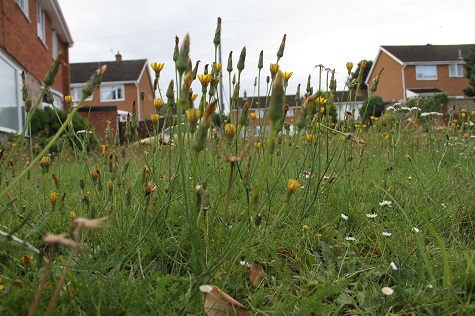
This practice of leaving the grass to grow longer is another popular trend, commonly known as 'rewilding' or the act of leaving the grassed areas to grow, over a long period of time. However I believe there are many things to consider when letting areas of grass to go wild.
The underlying soil type and seed bank populations will influence the type of flora that will grow when left unattended. Also, we are now seeing a lot of annual / bi annual wild flower seed mixes being sown down to help rewild areas.
For me, having a decent lawn can bring several benefits to your home and the surrounding environment:
A well-maintained lawn enhances the overall appearance of your property, adding beauty and curb appeal. It creates a welcoming and visually pleasing environment, which can increase your home's value and make it more attractive to potential buyers.
A lawn provides a valuable space for relaxation, recreation, and outdoor activities. It offers an inviting area for picnics, barbecues, playing sports, or simply enjoying time outdoors with family and friends. A green lawn can have a calming effect and contribute to a peaceful atmosphere.
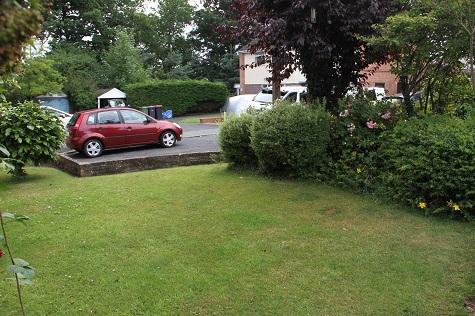
Lawns contribute to a healthier environment in various ways. They act as natural filters, trapping dust and pollutants, which helps improve air quality. Grass absorbs carbon dioxide and releases oxygen through photosynthesis, reducing greenhouse gases. Additionally, a well-maintained lawn can prevent soil erosion and filter rainwater, promoting groundwater recharge.
Grass can significantly impact the temperature around your home. It acts as a natural coolant, reducing the heat island effect in urban areas. Lawns absorb heat and release it slowly, keeping the immediate environment cooler. This can be particularly beneficial during hot summer months.
A healthy lawn promotes good soil health. Grass helps prevent soil erosion by binding the soil particles together with its root system. It also improves soil structure, increases microbial activity, and enhances nutrient cycling. A healthy lawn can contribute to a fertile soil ecosystem that supports the growth of other plants in your garden.
Lawns can act as natural sound barriers, absorbing and reducing noise levels from surrounding areas. They can help create a quieter and more peaceful atmosphere within your property.
Also the combination of letting some parts of the lawn to go wild, perhaps creating a semi rough area that allowed to grow longer say 100-150mm and mown once a month coupled with creating some the rewilding areas, will enhance the look of your garden and reduce the need for mowing wall to wall.
A well-maintained lawn, with diverse plant species and appropriate landscaping practices, can attract various wildlife. It provides a habitat for birds, butterflies, bees, and other beneficial insects, contributing to biodiversity and ecological balance. We have seen in recent years the Psychological benefits that come with maintaining lawns or indeed allowing areas to go wild. Being in nature and surrounded by greenery has a positive impact on mental health, reducing stress, anxiety, and improving overall well-being. A well-kept lawn can offer a tranquil retreat right outside your doorstep.
Lawn care
Remember, maintaining a lawn requires regular care, including mowing, watering, and fertilising. It's important to adopt sustainable practices, such as
using eco-friendly products and conserving water, to ensure the long-term health of your lawn and minimise environmental impact.
And on the same front, a wild flower areas will also need maintenance imports at the end of the growing season, usually a mow and collect regime late august / September and then the following spring the need to rotovate and resow with additional seed mixtures.
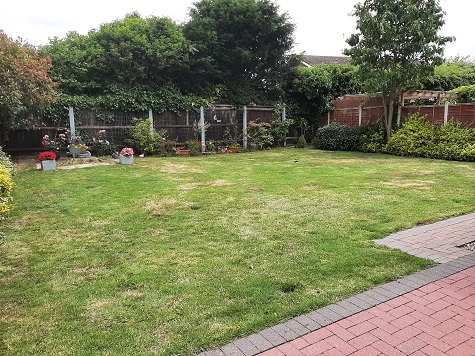
As for machinery, most machinery dealerships can offer a wide range of manufacturers' products to cope with any scope, size and scale of garden lawn. Ranging from pedestrian mowers to large ride on mowers, generally petrol, diesel or battery powered.
Over the last five years we have seen a boom in the sale of robotic mowers that come in a wide range of abilities in term of performance and safety features, they are now completely autonomous and can be left to cut the lawn areas without supervision, they even alert you when there a problem.
The key requirements for maintaining a healthy lawn are:
- You have a decent depth of topsoil at least 100mm with a soil pH between 5-7 pH and has a balance of available NPK nutrients and is not compacted and able to drain freely.
- Water your lawn deeply and infrequently rather than frequent light watering. This encourages the roots to grow deeper, making the grass more resilient. Water early in the morning to minimise evaporation and fungal diseases.
- Mowing techniques - set your mower blades to the correct height for your grass type. Avoid cutting more than one-third of the grass blade at a time. Regular mowing helps prevent weed growth and promotes denser, healthier turf. Weekly mowing is the norm for achieving a decent lawn. you can either collect or allow your clipping to fly.
- Apply a balanced fertiliser to your lawn according to the needs of your grass type. Follow the recommended application rates and timings to avoid over-feeding, which can harm the grass and the environment.
- Regularly inspect your lawn for weeds and take prompt action to control them. Apply pre-emergent herbicides in early spring to prevent weed seeds from germinating. Spot-treat existing weeds with selective herbicides.
- Overseeding helps fill in thin or bare patches in your lawn and promotes a lush, dense turf. Choose the right grass seed for your climate and grass type. Prepare the soil and spread the seed evenly, following the recommended seeding rate.
- Aerating your lawn relieves soil compaction and allows nutrients, water, and oxygen to reach the grass roots more effectively.
- Monitor your lawn for pests such as grubs, insects, or disease outbreaks. Take preventive measures like proper watering, mowing, and fertilisation to maintain a healthy lawn. If necessary, use targeted insecticides or fungicides following the manufacturer's instructions.
- Clean up debris Remove fallen leaves, sticks, and other debris regularly to prevent them from smothering the grass and harboring pests or diseases.
- Regular maintenance: Keep up with routine maintenance tasks like edging, trimming, and removing weeds. This will give your lawn a neat and well-maintained appearance.
- Carry out appropriate Spring and Autumn lawn renovations that generally involves scarifying the lawn in 2/3 directions to clean out any dead material, overseeding to repopulate the lawn and giving it a feed, and if required apply some top dressing to restore levels.
Remember that achieving a great lawn is an ongoing process that requires consistent care and attention. Be patient, observe your lawn's needs, and adapt your lawn care practices accordingly.